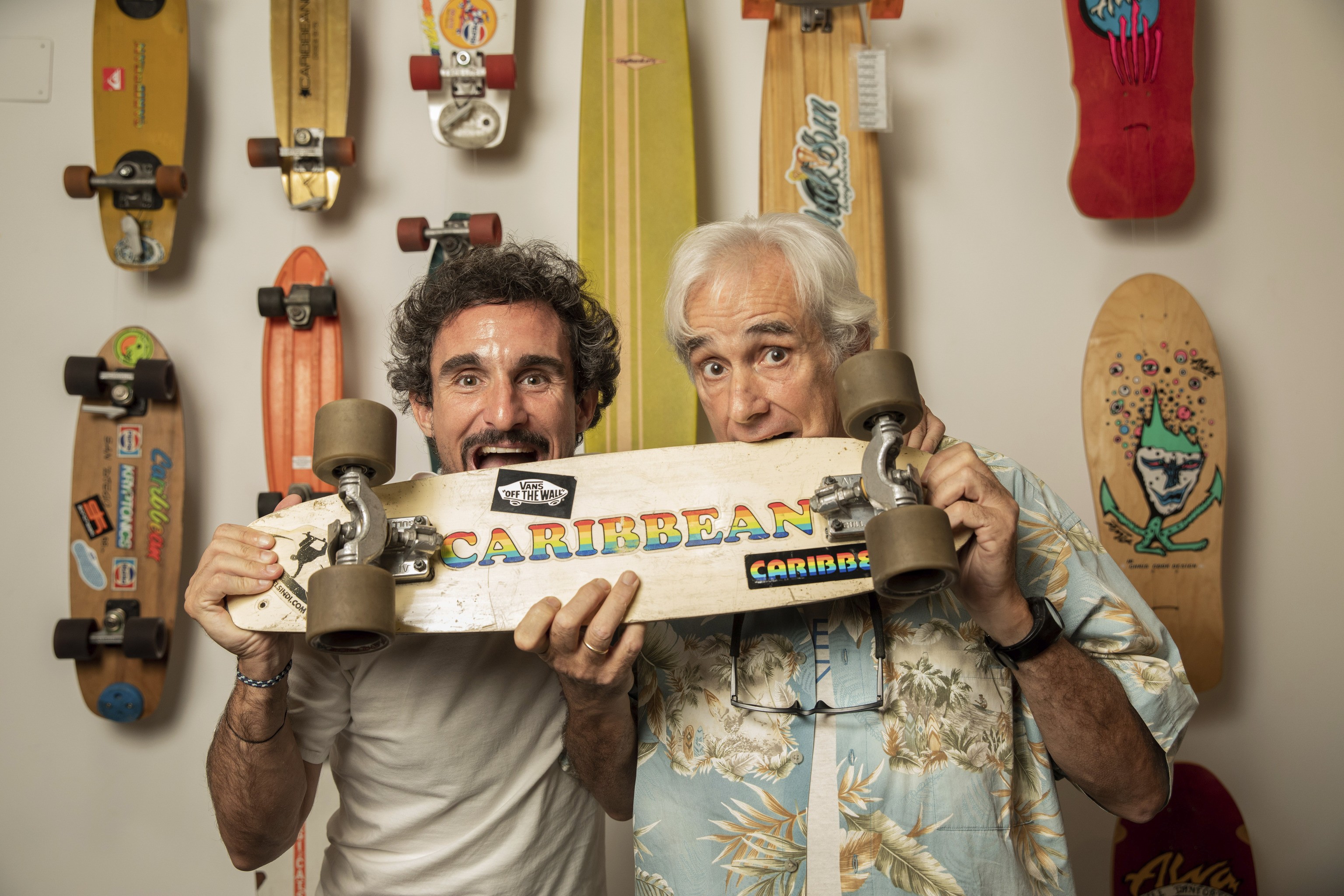There are families in which a profession, a business or a hobby is passed from one generation to another.
In others, that inheritance goes a little further and, thus,
a way of understanding life
is transmitted .
This is the case of the
Muñoz
and their passion for
skateboarding
and displacement sports.
Everyone in this family has the four wheels, the axles and the board imprinted in their DNA.
From Endika and Alba, the youngest, to grandfather José Antonio, better known as Doc, and alma mater of Caribbean, the first store of this sport in Spain.
His first contact with wheels was at the age of eight.
“My father was going to skate with his extensible rollers at the Retiro and he left them to me,” says
José Antonio
, who also played roller hockey at school.
But it would not be until years later, during a vacation in Biarritz, that he saw his first skateboard.
The poison for the four wheels was already inoculated, but his pocket did not allow him to buy one: "They were very expensive."
Soon after, he managed to buy his first skateboard.
"I bought it at Deportes Todo, it was a Sancheski [iconic Spanish brand] and it cost me about 200 pesetas from the year 1968," he recalls.
Until that moment,
he killed the bug with his friends making railanas
, a vehicle with three or four wheels, with truck engine bearings that they bought at the Rastro.
Already in the 70s, and with hundreds of kilometers on his legs, Doc, as he is known after dressing up in 2010 as the character from Back to the Future, headed to California to study.
"As soon as I got there, I saw a guy with a huge, silent skateboard and I was blown away," he says.
He located the store where they were selling it and
invested the money from his support in two
skateboards
.
"He fed me at university breakfasts, at parties, barbecues, etc," he recalls.
Upon his return to Spain, his two skateboards were the sensation of the Nuevas Ministerios area, under construction at the time, and where he rode with his friends.
An idea was running through his head and he contacted the American vendors by letter.
Soon he was
selling skates in the trunk of a Seat 133
that he had bought on installments.
“Parents came to buy them for their children;
it was the Top Seat », he says with a laugh.
Californian skate
and sports culture
was non-existent in Spain, but Doc couldn't get it out of his head.
He decided to bet everything on the board where he spent dozens of hours, despite his
lack of parental support
.
He asked the now-defunct Cimarra Sport for a space to sell his products, "what today is known as a corner in a shopping center," he explains.
His bet paid off and he went from opening a few days a week to having to attend every day.
She had to involve
Belén
, his girlfriend and his current wife, as a seller.
"She used to come with very young people with her father or those who already had a salary," she recalls.
When Cimarra Sports closed, Doc took over the seamstresses' part of the premises.
It was the mid-1970s and the store was born independently, becoming the
first to have this type of product in Spain
.
"I didn't have a penny, my father didn't help me," he recalls, "and I even had to sell on the ground because I didn't have a counter."
The 80s were golden years for Caribbean, which sold everything related to
skate
and Californian culture.
"There were days with a long queue on the street, but I didn't close until I had served everyone," she explains.
With the
skate
crisis in the US, the business suffered, but managed to survive thanks to surfing, another of its pillars, textiles and the sale of other products.
"I was the first importer of Vans shoes," he recalls.
But he insists on something: "
I didn't invent anything
, I brought what I saw on my trips to the US."
It would not be the only pothole that the Muñoz family had to overcome.
Doc still remembers how the
Gulf War
affected him .
"During that time it was the first time that one day I didn't make a single peseta; I didn't sell anything," he recalls.
Borja and his father José Antonio with some of their first boards.Antonio Heredia
Today,
skateboarding
continues to evolve and the store adapts to the fluctuations of fashion and the market.
In 2013 it moved to its current location on Ayala Street.
A much larger venue with
hundreds of boards of different modalities
, all kinds of accessories, spare parts and clothing, much of it vintage.
"They have come to Cuéntame to buy," adds his son Borja.
The relief in the family is assured.
His sons
Borja and Nacho
practically live on a board.
Borja, based in Madrid, is in charge of the school.
"We have children from 3 and 4 years old to a 61-year-old woman," he explains as he places some axes in the window.
They also organize events such as Solitary Cruising, where they take advantage of the emptiness of the streets of Madrid on January 1 to go out and shoot.
At
69 years old
, Doc continues skating, both in his own shop and on the streets of half the world, where he is the oldest in Europe in the
amateur
category .
And there are no signs that he is going to get off the table: "I will continue to climb as long as I can."
Conforms to The Trust Project criteria
Know more
USA
Youtube
Europe
Tell me
Return to the future
Universities
Articles Luis Blasco

